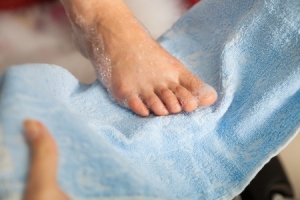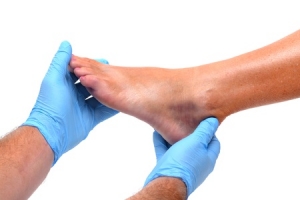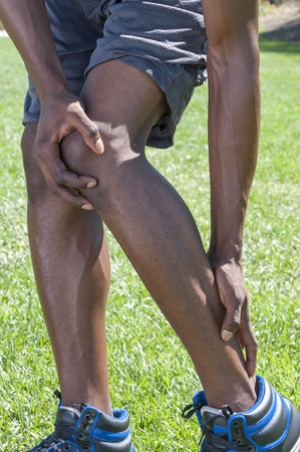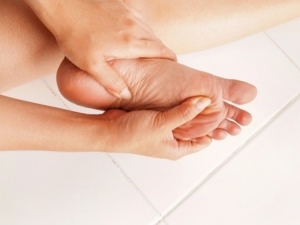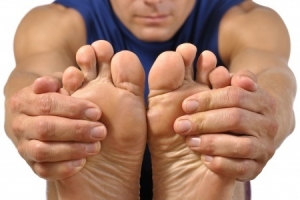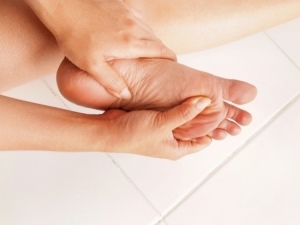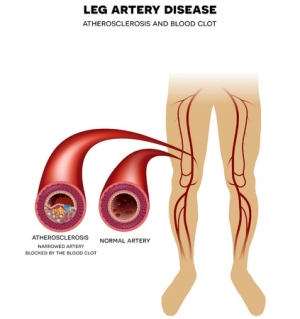Connect With Us
Blogs
Displaying items by tag: Diabetes
Diabetes: Making Positive Choices
At Superior Foot & Ankle Care Center we know that diabetes doesn’t have to prevent you from living a full and active life. We treat many patients with this disease and we know it can have a big impact on the health of your feet. Diabetes impedes the circulatory and immune systems increasing the likelihood of infections and decreasing the body’s ability to heal. To make matters worse, neuropathy, a condition also commonly associated with diabetes, makes it difficult to perceive sensations like pain or heat which would signal a potential wound. The good news is there’s much you can do to protect your feet. In recognition of National Diabetes Awareness Month we’d like to focus on some particularly important areas:
Foot Care—Your feet can be both a recipient and an early warning system with regard to problems with diabetes. For that reason, inspecting your feet on a daily basis is essential. Changes in skin or nails, lumps, swelling, bruises, redness, blisters can all signal a potential problem developing. It’s critical that one of our foot doctors, Dr. Victoria Foley or Dr. Constance Omelas be informed of any unusual changes immediately. A good care regimen can also help decrease the risk of foot problems in diabetic patients. Wash feet with a mild soap in warm—not hot—water and dry completely, especially between your toes.
Shoes—Although well-made, properly fitted shoes can help reduce the risk of foot disorders in all patients, those with diabetes have specific concerns to address. Look for shoes that are well cushioned to reduce impact to the soles of your feet. Shoes should be laced and fit snugly (but not tight) to provide stability and limit side to side movement of the foot. If you have a toe deformity such as a bunion or hammertoe, special padding may be prescribed to prevent rubbing and friction which could lead to a corn or callus. Be sure the front of the shoe is roomy to prevent toes from being squeezed together.
Keep Feet Dry—Damp feet can lead to a fungal infection. If you tend to sweat profusely you can use a foot powder or even antiperspirant on the soles of your feet to reduce wetness. Change socks whenever you notice they are damp.
Healthy Lifestyle—Follow your doctor’s instructions for controlling your diabetes. Don’t smoke (it will further impede your circulation). Eat a healthy diet that is high in protein, vegetables and whole grains and limits saturated and trans fats and sugars. Exercise regularly for good joint health and weight control.
If you have additional questions about foot health and diabetes, contact our Long Beach office by calling: 562-420-9800.
6 Signs You Need to Call the Foot Doctor
At Superior Foot & Ankle Center we find that many patients do not fully realize the role the podiatrist can play in your foot and overall health. Our purpose is to provide acute and preventive care to your entire lower extremity (from the tips of your toes up to your knees). We have a wealth of treatment options available including pain relief, multiple therapies, custom orthotics, exercise and surgery to correct and improve foot discomfort associated with both age and activities, including sports injuries. In addition, in many cases the foot doctor is able to diagnose a larger, systemic issue from symptoms in your feet and can then collaborate with other health care professionals to care for the disorder.
Use the following as a guideline if you’re trying to decide if you should call the podiatrist:
- You experience sudden or increasing pain; chronic pain seems to be getting more severe or more frequent
- You notice abnormalities in your feet: swelling, changes in shape or size, bruising, lumps,
- Other non-painful symptoms: tingling, burning, itching, pins and needles, numbness
- Changes in skin (color, redness, scaling, flaking, sores, blisters, cracking) or toenails (discoloration, thickening, crumbling, peeling)
- Possible signs of infection: pus or discharge, redness or red streaks, tenderness, heat, fever
- You have any symptoms and have diabetes or other conditions that suppress the immune or circulatory systems—even the most minor symptoms can become major medical threats to these patients
If you said yes to any of the above symptoms or signs, contact our Long Beach office for an appointment by calling: 562-420-9800. Our foot and ankle surgeons, Dr. Victoria Foley and Dr. Constance Omelas will do a complete examination and help get to the bottom of your foot pain so that you can get back to the active lifestyle you love. Regardless of whether your foot disorder is common, such as athlete’s foot or an ingrown toenail or a more complex condition, starting treatment sooner rather than later will enable the foot doctor to use the least invasive methods and ensure the quickest cure.
What’s Behind Childhood Obesity?
At Superior Foot & Ankle Center we know the importance for your feet of maintaining a healthy weight. Obesity puts added strain on the muscles, joints and ligaments of your feet and is a risk factor for several foot disorders. September is Childhood Obesity Awareness Month and we want to help families create healthy habits now so that children will grow into healthy adults.
Contributing Factors
Thankfully, the incidence of obese and overweight children appears to have leveled off over the last decade after steadily rising for several decades before. However, we still have a long way to go. Nearly 1/3 of children ages 10-17 are overweight or obese. The lifestyle of the average child has changed dramatically from even 2 or 3 generations ago. Some reasons for the increased weight in young people include:
- Easy access to inexpensive, high calorie foods and sugary drinks
- To much time spent being sedentary and inactive
- Lack of sleep
- Increase in cost of healthy foods
- Decrease in community-oriented opportunities for physical activity
If you consider the number of “screens” most children own, the amount of pre-packaged and process food they consume and the decrease in time and opportunity to simply play outdoors or in the neighborhood, it’s easy to see how the increase in overweight children has occurred.
Ways to Help
There are many options for helping young people attain and maintain a healthy weight, including:
- Get rid of junk food and sugary sodas and snacks. If it’s too much for your family to go “cold turkey,” you can start by swapping in healthier versions of their favorite: frozen yogurt for ice cream, granola bars for cookies, baked chips instead of fried.
- Cook more meals at home. This way you control the ingredients. This is also a great opportunity to get your children involved in learning about healthy meals and helping to plan, shop and cook them.
- Get everyone a water bottle and encourage them to keep it filled. Drinking enough water everyday helps control hunger and will take the place of sweet drinks.
- Make fitness and exercise a priority for the whole family. It doesn’t have to be boring! Ice skating, rollerblading, skiing, hiking, bicycling and team sports are all good and fun choices.
By preventing obesity now when your children are young you will be helping them avoid serious medical conditions down the road which can impact their feet and entire body: diabetes, heart disease, arthritis and more. If you have additional questions about how to be proactive about your child’s foot health, our podiatrists, Dr. Victoria Foley and Dr. Constance Omelas will be happy to answer them. Contact our Long Beach office by calling: 562-420-9800.
Dealing with Calf Pain
One of the trickier areas to diagnose that we see at Superior Foot & Ankle Care Center is pain in the calf. This symptom can point to a variety of disorders, some more serious than others. The only way to definitively find out what’s causing the pain is to make an appointment at our Long Beach office. Our podiatrists, Dr. Victoria Foley and Dr. Constance Omelas will do a complete lower extremity examination and also get your medical history to help track down the source of calf pain. Some possibilities include:
Exercise or Injury—the most obvious and least threatening cause of calf pain is muscle pain due to exercise. If you have recently started a new fitness routine or sport, some soreness may be normal. Pain that lasts more than a few days, however, or that is severe requires medical attention. Injuries to calf muscles or to the Achilles tendon are possible in cases where patients do too much too soon or suddenly ramp up their exercise program.
Dehydration—did you know that most of us are walking around in a state of chronic dehydration? Unless you drink half your body weight in water each day, you may be among the dehydrated. With extra sweating in the summer months the risk increases. One of the signs of dehydration is cramping in the calf. Sometimes cramps will occur at night and wake you up.
Other Foot Disorders—sometimes a pain in the calf is not about the calf at all. It can be a symptom of a foot or ankle problem such as flat feet or Equinus.
Deep Vein Thrombosis (DVT)—this is a blood clot that forms deep in the calf. It is more common if you have had surgery recently or been on an airplane. This is a potentially dangerous condition and if you believe there is any possibility of DVT you should contact the foot doctor immediately.
Peripheral Vascular Disease—poor circulation to the legs and feet, which are characteristic of this disease (and other conditions, such as diabetes, that affect the circulatory system), can result in calf pain, especially when you sit with your legs up or when walking.
If you have been experiencing consistent calf pain, contact us by calling: 562-420-9800.
Take a Good Look at Your Feet
When’s the last time that you took a good look at your feet? At Superior Foot & Ankle Care Center, we believe regularly examining your feet is a key component of good foot health. In addition, your feet are the part of your body where several systemic conditions such as diabetes, arthritis and peripheral neuropathy may first exhibit symptoms. You can examine your feet in as little as 10 minutes. Ready, set, go:
- Start by standing with your feet together and look down at them. Do you notice any difference between your two feet in size or shape? Is there any swelling in your ankles or feet?
- Now sit down so you can get a closer look at each foot. Examine the top, bottom and sides of your feet as well as between your toes. If you see any cuts or wounds make sure they are clean and appear to be healing. Check your skin. Do you notice any redness, dry flaky skin, rashes or bruises? Do you have any unusual freckles or moles that appear to have changed since the last time you looked at them? Do you see any lumps, growths, warts or new calluses?
- Examine your toenails. Nails that are discolored, thick or crumbling at the edge may indicate a fungal condition. A bluish or purplish tinge to the skin under your nails is a possible sign of a circulation issue.
- While you’re seated, take a pencil and run the erased end over the top, bottom and sides of your foot. The sensation should be equal in all parts of your foot.
- Lastly, flex your toes and feet. Do you notice any pain or stiffness in your joints?
If you spot anything that doesn’t seem quite right, contact our Long Beach office for an appointment by calling: (562-420-9800). Our podiatrists, Dr. Victoria Foley and Dr. Constance Omelas, will give your feet a complete examination and assess whether you have a foot health issue.
Making this quick foot self-check a part of your monthly health routine will go a long way to preventing foot problems as well as detecting any conditions that do develop in their very earliest stages when treatment is usually less invasive and more effective.
Hidden Risk for Men with Diabetes
Did you know that when it comes to self care for patients with diabetes that men are far less likely than women to follow the podiatrist’s instructions? In honor of Men’s Health Month we at Superior Foot & Ankle Center want share some important ways that men (and the women who love them) can greatly reduce their risk of serious diabetic foot complications.
One of the biggest health threats for diabetic patients is an open wound or ulcer. Due to poor circulation and decreased immune system function even seemingly minor cuts or injuries can rapidly become major problems. Infections can develop that are very difficult to heal, leading to serious debilitation and even amputation. To reduce the risk of injury and infection, follow these tips:
Inspect your feet daily: since diabetic patients often have nerve damage which makes it difficult to perceive pain and other sensations, visual examination of the feet becomes very important. If you notice any unusual bumps, red spots, blisters, changes in color, size or shape of the foot you should let our podiatrists, Dr. Victoria Foley and Dr. Constance Omelas know ASAP.
Don’t go barefoot: wearing some type of footwear will reduce the risk of toenail and skin infections since these are transmitted by direct contact. You will also decrease the chances of injuring your foot by banging into something or stepping on a sharp object.
Practice good hygiene: wash your feet daily with warm (not hot) water and a mild soap. Be sure to dry thoroughly, especially between the toes, to help prevent athlete’s foot. Sweat glands can also be affected by diabetes. If feet are dry, be sure to apply a rich moisturizer to prevent cracking. Patients who sweat excessively should use a foot powder to help keep feet dry.
Prevent ingrown nails: keep toenails trimmed short and straight across—curved edges can grow down and back into the skin around the nail bed, opening a doorway for bacteria. If you do develop an ingrown nail, don’t attempt any “bathroom surgery!” Allow the podiatrist to take care of the nail.
Following these simple steps can greatly reduce the risk of disability and health issues from diabetes. If you have questions or are experiencing any unusual symptoms in your feet contact our Long Beach office for an appointment by calling: 562-420-9800.
What You Eat Matters to Your Feet
Did you know that a significant number of foot and ankle conditions are caused or made worse by being overweight? Plantar fasciitis, arthritis, flatfeet, tendonitis and stress fractures all have excess weight as a risk factor. In addition, carrying more pounds than you should can affect your knees, hips and back which can then lead to secondary foot problems due to changes in your gait to compensate for pain in these other parts of your body. Lastly, overweight patients are more likely to develop high blood pressure, heart disease and diabetes—all of which pose serious medical threat to your feet (not to mention the rest of your body). March is National Nutrition Month and here at Superior Foot & Ankle Care Center we would like to offer these tips to improve your diet and attain or maintain a healthy weight:
- Let’s eat in—cooking meals at home puts you at a nutritional advantage. You can control the ingredients and calories in the dishes you prepare. Good food doesn’t have to be complicated. Learn some simple dishes and up the flavor quotient with herbs, spices and citrus fruits instead of fats and creamy sauces. Choose broiling or grilling over frying as your cooking method.
- Portions matter—how much you eat is almost as important as what you eat. Ask your doctor what amount of calories you should be consuming everyday to maintain a healthy weight. Check the serving sizes in the nutrition facts for the foods you eat and adjust to your daily intake if necessary. Try using a smaller plate to automatically scale back on portions.
- Variety is the spice of life—mix up your menus. Be sure to include a colorful array of different fruits and vegetables each week. By doing so, you’ll go a long way toward ensuring that you are getting all the different nutrients you need. Explore food from different cultures.
- Add some action—try to be physically active for some part of every day. This doesn’t mean you have to go to the gym or play on a team. Take the stairs, pull weeds, walk while you talk on the phone in your office—just get moving. This will help burn calories and increase fitness. Exercise can also help fight heart and other disease.
Our podiatrists, Dr. Victoria Foley and Dr. Constance Omelas, believe in a total body approach to good health. If you have questions about your weight and your feet or are experiencing pain or discomfort in your feet currently, contact our Long Beach office for an appointment.
Why Do My Feet Feel Like They’re On Fire?
One of the complaints that patients sometimes bring to Superior Foot & Ankle Care Center is a burning sensation in their feet. In addition to examining your feet, our podiatrists, Dr. Victoria Foley and Dr. Constance Omelas will want to get a complete medical history. If you are over the age of 50, a burning feeling in your feet is more common, especially if you’ve walked a long distance or spent many hours standing. The foot doctor may suggest some ways to relieve the burning, such as:
- Not standing for long periods of time or, if you have a day where you need to be on your feet, at least take breaks and put your feet up for a few minutes every hour
- Make sure your shoes fit properly and are not too snug; the design of the shoe should allow for air circulation
- Choose breathable materials for shoe and socks—synthetics can prohibit feet from breathing and make burning more likely
- Try cushioned insoles for increased comfort
- Soak tired feet in a foot bath to relieve burning
A Word of Caution
Sometimes a burning sensation in your feet may be the result of a more serious podiatric problem. For example, a structural problem may require an orthotic device to shift pressure away from the troubled area and alleviate the burning. Other possibly serious reasons for burning feet include:
- A Neuroma or Tarsal Tunnel Syndrome
- Diabetes
- Thyroid Disorder
- Obesity
- Alcohol Abuse
If burning feet is a problem that you endure consistently, you should make an appointment to get your feet evaluated at our Long Beach office. Many times your feet can be an early warning system for systemic problems in your body and it’s better to be safe than sorry. Contact us at 562-420-9800 and find out what’s behind your burning feet.
You’ve Got to Have Heart and Sole
February is National Heart Month and here at Superior Foot & Ankle Center we want patients to understand the vital connection between heart and podiatric health. High blood pressure, or hypertension, is a major contributing factor to heart disease. Hypertension can lead to peripheral artery disease and other circulation problems which can have a significant impact on your feet. Poor circulation, particularly in patients with diabetes can lead to sores and ulcers forming on your feet and increase the risk of amputation. Here are some other facts about hypertension:
- 90 percent of American adults are expected to develop high blood pressure during their lifetimes
- It’s the number one risk factor in women’s deaths in the U.S. and the number two for men
- High blood pressure is more prevalent in blacks than whites and also develops earlier in life
Fight Back
There are a number of ways that you can help reduce your risk of hypertension:
- Know your numbers—get your blood pressure checked regularly
- Maintain a healthy weight—add more colorful fruits and vegetables to your plate, reduce carbs and sugars
- Exercise regularly—look for small ways to increase activity: park farther away from your office entrance, pace while you talk on the phone
- Reduce sodium in your diet—read labels and make more meals at home using herbs, non-sodium seasonings, citrus fruits and other flavorful ingredients to spice up your dishes
- Limit alcohol intake
- Don’t smoke
- If your doctor prescribes medication for hypertension take as directed
If you have not been diagnosed with hypertension but you are experiencing cramping in your feet or changes in feet’s skin color or temperature, make an appointment at our Long Beach office by calling: to see one of our podiatrists, Dr. Victoria M. Foley or Dr. Constance Ornelas. These may be early warning signs of high blood pressure or another condition that the foot doctor will want to evaluate.
Meeting the Needs of Seniors
At Superior Foot & Ankle Care Center, we know that our senior patients have special health care needs. Paying attention to and caring for your feet is essential to your overall health as many diseases such as diabetes, arthritis and certain nerve or circulation problems may first show symptoms in the feet. Maintaining mobility also means freedom to go where you wish and participate in the activities you love. Here are some ways that you can help protect the health of your feet if you are over 60:
- Take care of your eyes—wait, weren’t we just talking about feet? Yes, but many patients whose vision is failing have trip or fall accidents which result in sprained ankles or fractures in the foot. January is Glaucoma Awareness month. This disease currently affects more than 3 million Americans. Called “the sneak thief of sight,” vision loss from glaucoma can come on gradually and is irreversible. However, a simple eye exam can test for glaucoma (and other eye disorders) and treatment can prevent blindness. In fact glaucoma is the leading cause of preventable blindness.
- Wear shoes that fit properly without rubbing or squeezing any part of your foot. Choose shoes that have good arch and ankle support and a non-slip tread. Replace worn out shoes.
- Protect your circulation by walking frequently, avoiding sitting for long periods with your legs crossed and by not smoking.
- Keep toenails trimmed straight across and not too short to avoid ingrown nails.
- Inspect your feet daily (or if you are unable to do so ask someone to do for you). Look for bumps, bruises, swelling, changes in color, shape or skin discolorations or rashes. Report any changes to our podiatrists, Dr. Victoria Foley and Dr. Constance Omelas. Regular podiatric checkups are also an essential part of senior foot health. Most foot problems can be more easily treated and with less invasive measure if detected in their initial stages. If you have any foot concerns, contact our Long Beach office for an appointment today by calling: (562) 420-9800.
